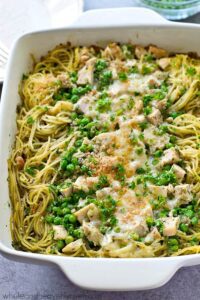Creme Brulee Doughnuts is a delicious recipe that combines amazing flavors and textures.
Imagine the crisp, caramelized sugar crust of crème brûlée meeting the fluffy, fried perfection of a doughnut. This heavenly combination represents the pinnacle of dessert innovation, bringing together two classic treats into one extraordinary creation. Crème Brûlée Doughnuts offer textural nirvana: the satisfying crack of caramelized sugar giving way to pillowy doughnut, then yielding to the luxurious, velvety custard within.
The genius of this dessert lies in its perfect balance of elements. The doughnut provides a neutral, slightly sweet base that doesn’t compete with the custard. The torched sugar topping adds textural contrast and bitter caramel notes that cut through the richness. The custard filling delivers the classic crème brûlée flavor profile – rich, vanilla-forward, and impossibly smooth. Together, they create a dessert that feels simultaneously familiar and novel, comforting and sophisticated.
The History of Doughnuts
Doughnuts have a long and fascinating history dating back to ancient times. Early versions were likely simple fried doughs sweetened with honey. The modern doughnut as we know it emerged in 19th century America, with the ring shape supposedly invented by Hanson Gregory, a sea captain who punched holes in doughnuts to solve the problem of uncooked centers.
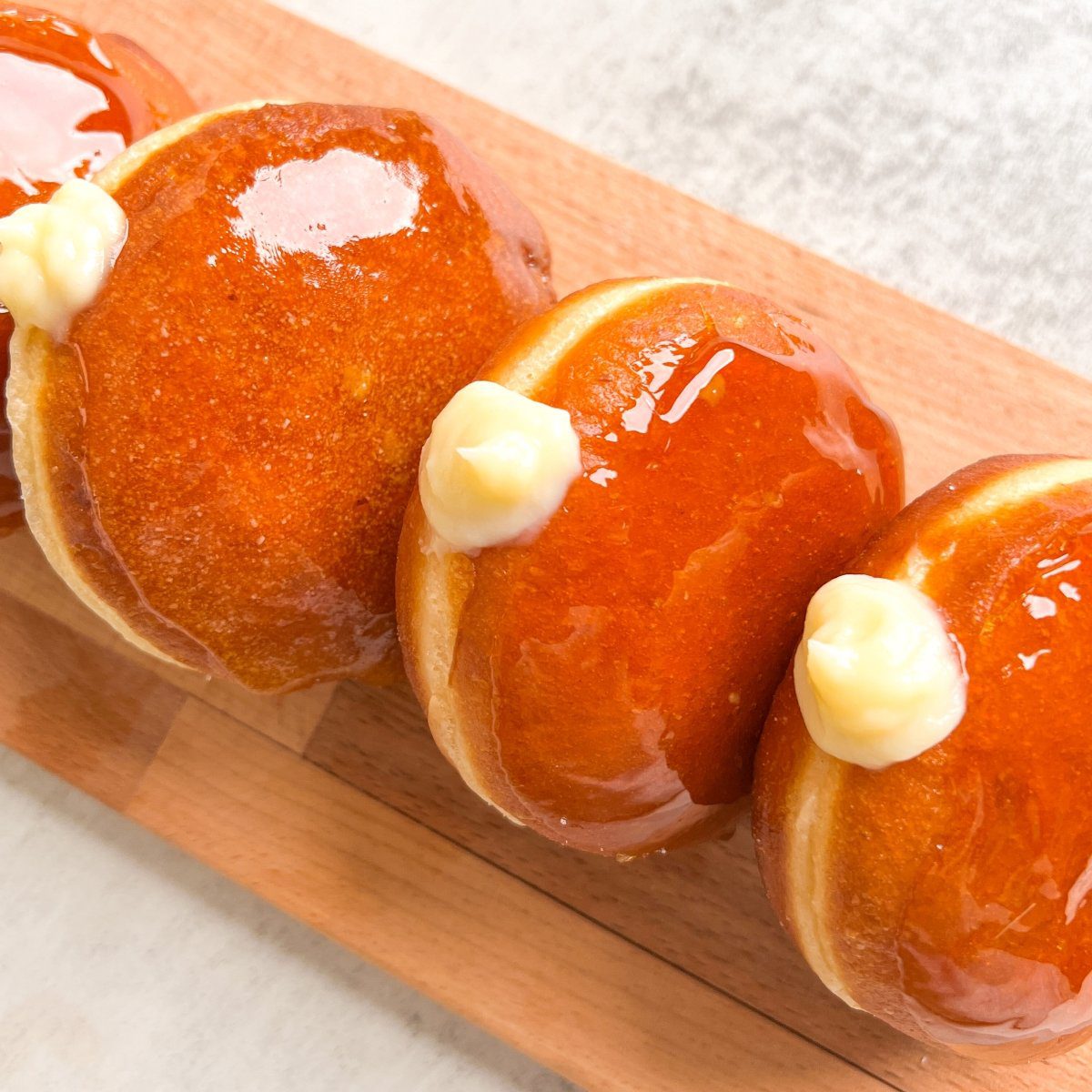
Crème brûlée has an even longer history, with versions dating back to 17th century France and England. The characteristic burnt sugar topping became popular in the late 19th century. The combination of these two classics represents contemporary dessert innovation, part of a larger trend of hybrid desserts that began with the cronut phenomenon in 2013.
The Science of Perfect Doughnuts
Creating light, airy doughnuts requires understanding the science of yeast and frying. Yeast converts sugars into carbon dioxide gas, which gets trapped in the gluten network, causing the dough to rise. The ideal proofing temperature is around 75-85°F – too cold and yeast works slowly, too hot and it dies.
Frying creates the characteristic texture through several processes. As the dough hits the hot oil, surface moisture rapidly vaporizes, creating a crisp exterior. The interior cooks more slowly through conduction, allowing the starches to gelatinize and proteins to coagulate, creating the tender crumb. Proper oil temperature (350-375°F) is crucial – too low and doughnuts absorb oil, too high and they burn outside while remaining raw inside.
Ingredient Selection Guide
Flour: All-purpose flour with moderate protein content (10-12%) works best. Bread flour creates too much gluten, making doughnuts tough, while cake flour lacks enough structure.
Yeast: Active dry yeast requires proofing in liquid first. Instant yeast can be mixed directly with dry ingredients but may require adjustment of liquid amounts.
Dairy: Whole milk provides the best flavor and richness for both dough and custard. For the custard, heavy cream with 36-40% butterfat creates the silkiest texture.
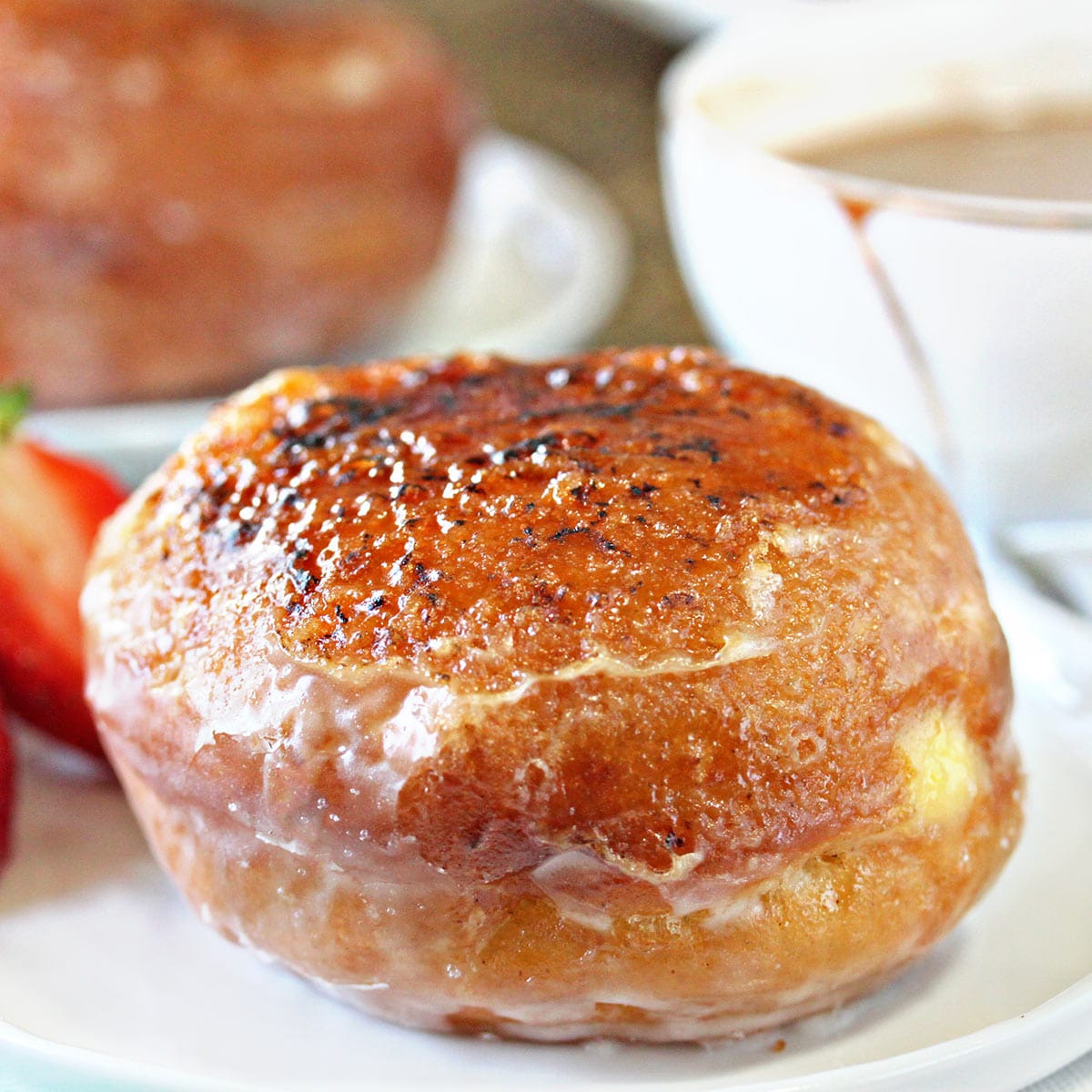
Eggs: Fresh large eggs provide structure in the dough. For custard, use yolks only for maximum richness and smoothness without eggy flavor.
Sugar: Granulated sugar works best for both dough and caramelizing. Superfine sugar caramelizes more evenly but isn’t necessary.
Technique Mastery
Dough development: Knead dough until smooth and elastic but not tough. The windowpane test (stretching a small piece until translucent without tearing) indicates proper gluten development.
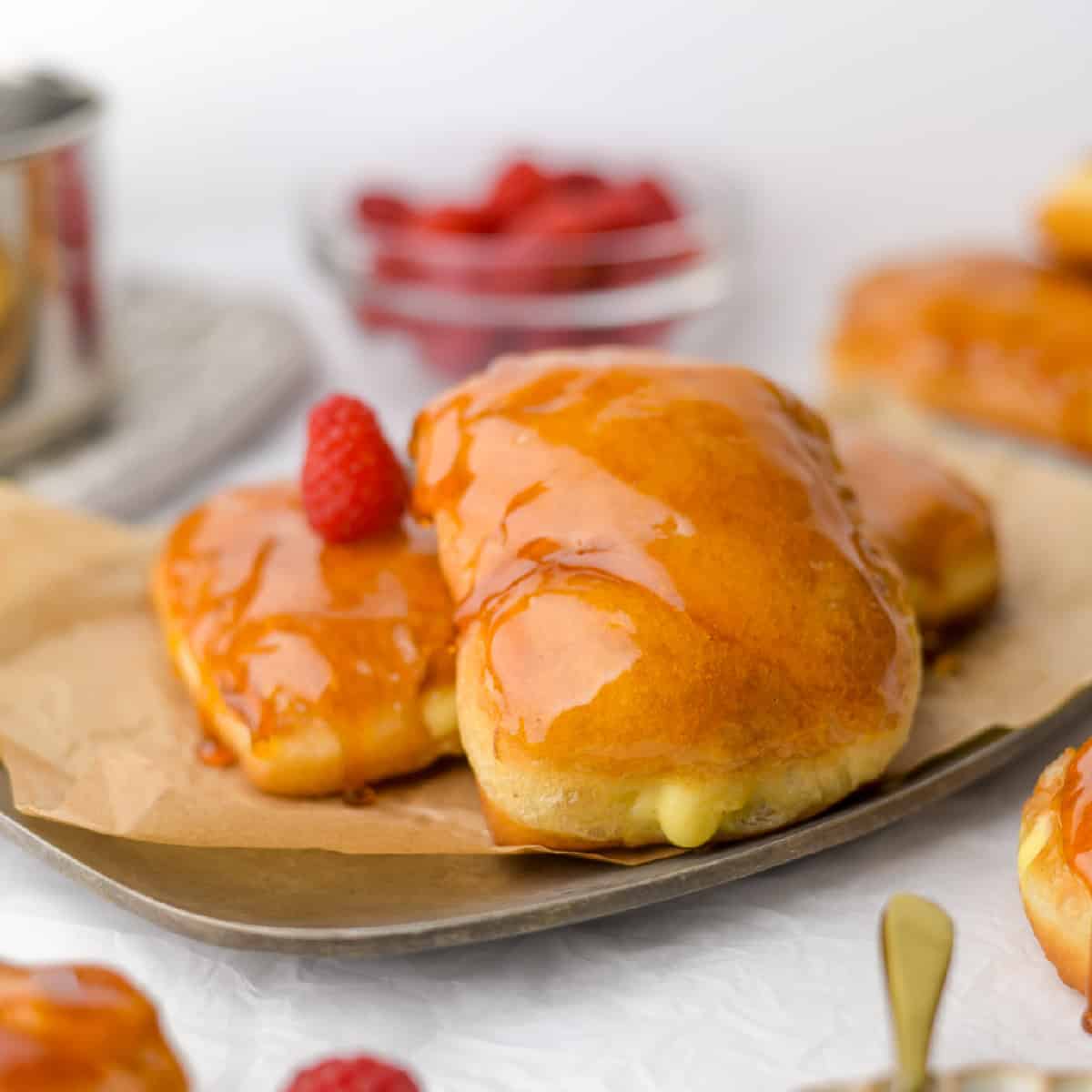
Proofing: Let dough rise in a draft-free area. The finger dent test (indentation remains when pressed) indicates complete proofing. Underproofed doughnuts will be dense; overproofed will collapse.
Frying: Maintain consistent oil temperature. Fry in small batches to prevent temperature drops. Turn doughnuts only once for even browning.
Custard making: Temper eggs properly to prevent scrambling. Strain custard before chilling to ensure smoothness. Chill completely before filling doughnuts.
Caramelizing: Use a kitchen torch held 4-6 inches away, moving constantly for even caramelization. Alternatively, use a broiler but watch carefully as sugar burns quickly.
Flavor Variations
While classic vanilla is delicious, consider these flavor innovations:
Chocolate: Add cocoa powder to dough and chocolate to custard for double chocolate version.
Citrus: Infuse custard with orange, lemon, or lime zest for brightness.
Spiced: Add cinnamon, nutmeg, or cardamom to dough or custard for warmth.
Coffee: Infuse cream with coffee beans or add espresso powder to custard.
Lavender: Infuse cream with culinary lavender for floral notes.
Advanced Techniques
Elevate your doughnuts with these professional methods:
Pre-fry freezing: Freeze shaped doughnuts before final proof, then proof and fry directly from freezer for better structure.
Vacuum sealing custard: For ultra-smooth texture, cook custard sous vide at 176°F for 1 hour.
Sugar alternatives: Use raw sugar, demerara, or coconut sugar for different caramel flavors.
Infused oils: Fry doughnuts in oil infused with vanilla bean or citrus zest for subtle flavor enhancement.
Layered filling: Create multiple filling layers with different flavors or textures.
Presentation Ideas
Make your doughnuts visually stunning:
Dusting: Lightly dust with powdered sugar before or after caramelizing for contrast.
Garnishes: Add edible flowers, gold leaf, or chocolate curls for special occasions.
Sauces: Serve with fruit coulis, chocolate sauce, or caramel for dipping.
Plating: Create dessert plates with crème anglaise swirls and fresh berries.
Mini versions: Make bite-sized doughnuts for parties and events.
Troubleshooting Common Issues
Dense doughnuts: Likely underproofed or over-kneaded. Ensure proper proofing time and knead just until smooth.
Oily doughnuts: Oil temperature too low. Use thermometer and maintain 350-375°F.
Tough texture: Too much flour during rolling or over-kneading. Measure flour properly and knead appropriately.
Custard curdling: Eggs scrambled from too high heat. Temper properly and cook gently.
Soggy doughnuts: Filled too soon after frying or custard too warm. Cool completely before filling.
Dietary Adaptations
This recipe can be adapted for various dietary needs:
Gluten-free: Use quality gluten-free flour blend with xanthan gum.
Dairy-free: Use plant-based milk and cream alternatives, and vegan butter.
Vegan: Use egg substitutes in dough and cornstarch-based pudding for filling.
Lower sugar: Reduce sugar in dough and use sugar alternative in custard. Skip caramelized topping.
Baked option: Bake doughnuts at 350°F for 12-15 minutes instead of frying for lighter version.
Storage and Serving
These doughnuts are best served immediately after caramelizing when the sugar is still crisp. If necessary, store unfilled doughnuts at room temperature for 1 day or freeze for up to month. Store custard separately for up to 3 days.
Assemble just before serving. The sugar topping will soften over time due to moisture from the custard and doughnut. For events, set up a torching station so guests can caramelize their own.
Leftovers can be refrigerated but will lose textural contrast. Briefly re-crisp in air fryer or oven before serving.
Cultural Significance
Crème Brûlée Doughnuts represent the globalization and democratization of pastry techniques. Once confined to professional kitchens, the kitchen torch has become a common home tool, allowing amateur bakers to recreate restaurant-quality desserts.
This hybrid dessert also reflects our increasingly sophisticated palates and desire for novel experiences. The combination of humble doughnut and elegant crème brûlée breaks down culinary class barriers, creating something accessible yet luxurious.
Final Thoughts
Crème Brûlée Doughnuts represent the joyful creativity of modern baking. They remind us that innovation often comes from combining familiar elements in new ways rather than inventing something entirely new.
The process of making them – from yeast activation to the final torch moment – connects us to fundamental cooking techniques while allowing for personal expression. Whether you’re an experienced baker or trying something advanced for the first time, these doughnuts offer satisfaction in both process and result.
As you crack through that caramelized sugar into the fluffy dough and rich custard, appreciate how this humble-yet-elegant creation represents the best of what pastry has to offer: technique, creativity, and pure deliciousness.
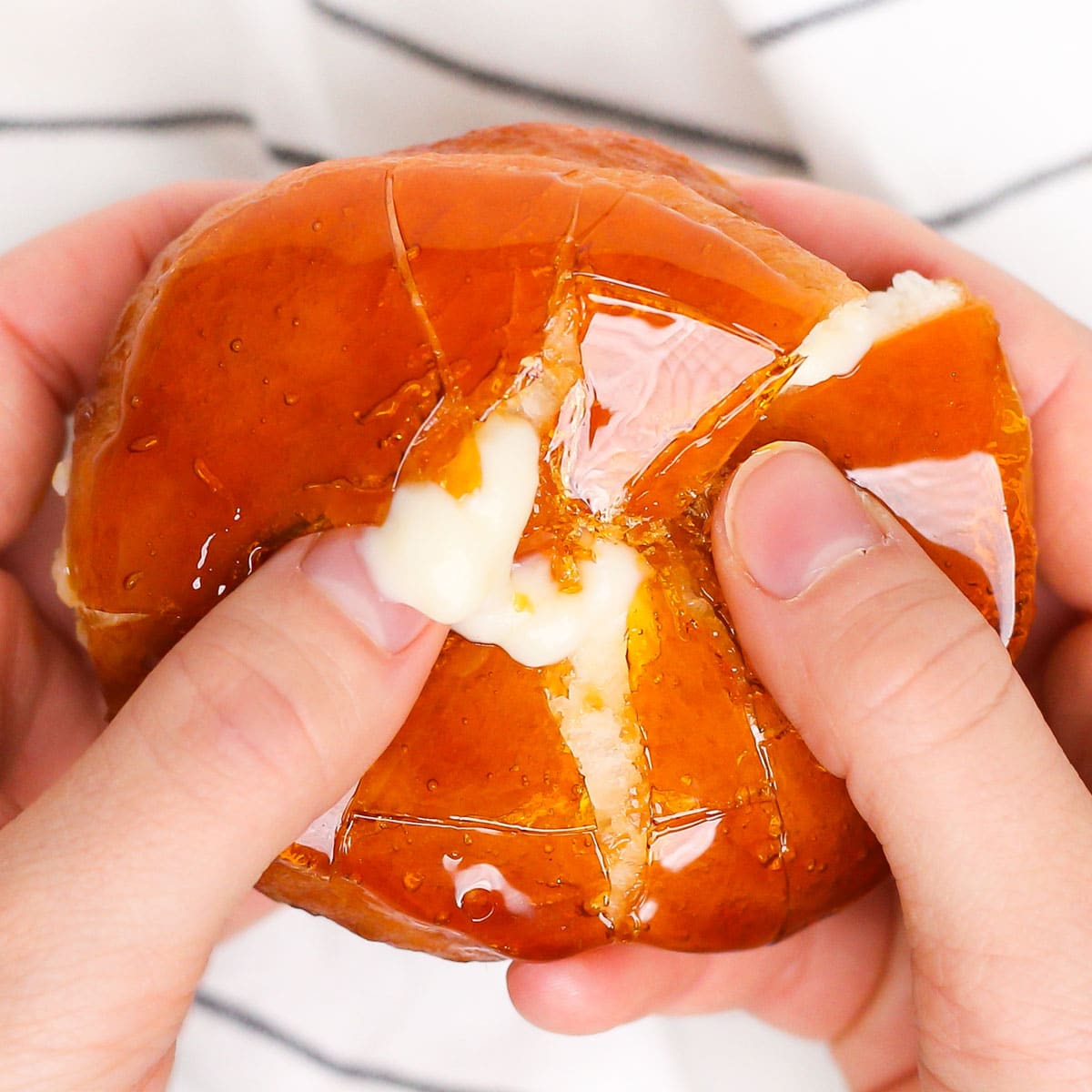
Creme Brulee Doughnuts
Ingredients
Method
- Dissolve yeast in warm milk with a pinch of sugar, let foam (5 minutes)
- In mixer bowl, combine flour, sugar, and salt
- Add yeast mixture, eggs, butter, and vanilla
- Knead until smooth elastic dough forms (5-7 minutes)
- Place in greased bowl, cover, let rise until doubled (1 hour)
- Whisk egg yolks and sugar until pale and thick
- Heat cream until just simmering
- Temper egg mixture by slowly adding hot cream while whisking
- Return to pan and cook until thickened (170°F)
- Strain, add vanilla and salt, chill completely
- Roll dough to 1/2-inch thickness, cut into rounds
- Let rise until puffy (30 minutes)
- Heat oil to 350°F, fry doughnuts until golden (1-2 minutes per side)
- Drain on rack, cool completely
- Fill doughnuts with chilled creme brulee filling using piping bag
- Sprinkle tops with sugar and caramelize with torch
- Serve immediately for crisp sugar topping

